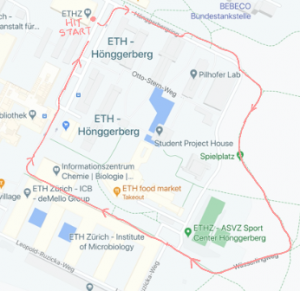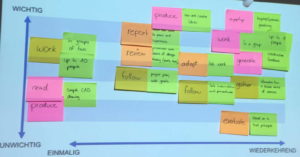(first published in The Materialist, May 2021)
Dear Materials Science and Engineering Students,
I congratulate you whole-heartedly on your choice of Materials Science and Engineering for your undergraduate studies. You are all a whole lot smarter than I am. When I was at your career stage, I had barely heard of Materials Science. I started out studying Natural Sciences (a bit like our ETH Interdisciplinary Sciences program) at Cambridge University with a focus on Chemistry and Geology, then I moved to the University of California at Berkeley for a PhD in Theoretical Chemistry, and after that to the Applied Physics Department at Yale University for postdoctoral work. It took me quite a while to realize that all the most interesting and important problems are actually in Materials Science and Engineering, and only when I started my independent faculty position at UC Santa Barbara did I find my way to a Materials Department.
So what is so important and interesting about Materials Science and Engineering? Well, you are developing the skills that you’ll need to save the world and to define the future of human civilization.
Let’s start with the future of human civilization. You might have thought you could leave that to your school-mates who chose to pursue the Arts or Politics, but think again for a minute. From the Stone Age, through the Bronze and Iron Ages, to today’s Silicon Age, every era of human history has been named, not for the prevailing culture or system of government, but for the material that dominated the time. And the reason is that every major advance in human civilization was driven by a fundamental development in Materials. Sometimes from an advance in processing, such as the shaping of natural materials such as stone, sometimes from an advance in materials synthesis, for example the smelting of ores to produce metals, and sometimes from increased understanding of structure-property relationships and device design, such as the discovery of transistor behavior in semiconductors. It’s a safe bet that the next era of human civilization will be named after a material, and it’s going to be your job to decide which one. Maybe it will be a Polymers age. Or (my personal favorite) a Multiferroics Age. Or a Ceramics Age — that would be quite fun because we could make jokes about being back in the Stone Age. Or more likely it will be something that we haven’t heard of yet, because it hasn’t even been imagined.
And that brings us to the saving the world part. In today’s Silicon Age, silicon-based transistors form the core of the microelectronics that enable much of our modern way of life. And as we become more and more dependent on information technologies, not just in our computers and smart phones, but also for our transportation and supply networks, banking systems, entertainment industries, and so on, we use increasingly more of our global energy budget to operate them; by some estimates half of the world’s energy will be consumed by silicon-based information technologies within a decade! And that is clearly not sustainable. So to achieve sustainable energy solutions and avoid climate catastrophe, we urgently need to develop new device paradigms based on entirely new materials.
If you are not so keen on device physics, you have many other options for using your Materials Science and Engineering skills to save the world. Take a look at the United Nations Sustainable Development Goals, and I challenge you to find one that can be reached without advances in materials! You and your classmates will need to develop new biomaterials to improve human health. You’ll need to invent materials for food packaging and preservation to reduce global hunger. You’ll make filters that improve water quality, develop building materials for sustainable housing, and promote gender equality with your efficent off-the-grid lighting solutions that allow girls in emerging regions to study and finish their education.
So when your studies feel tough — when it feels like we expect you to know your way around the periodic table as well as the chemists, to develop the mathematical literacy of the physicists, to hone your design skills to the level of the best engineers, and to learn an infinity of characterization tools and computational methods — remember, you’re getting ready to define the future of human civilization, and to save the world. And that was never going to be easy…
Very best wishes for your personal and professional success, Nicola




